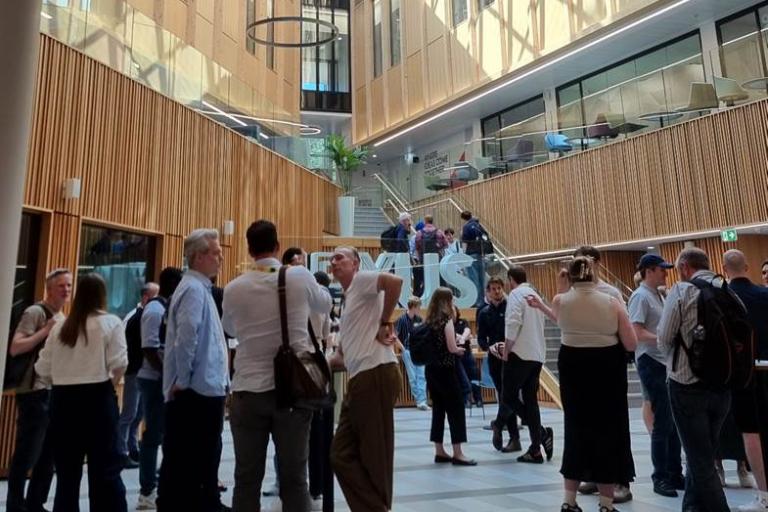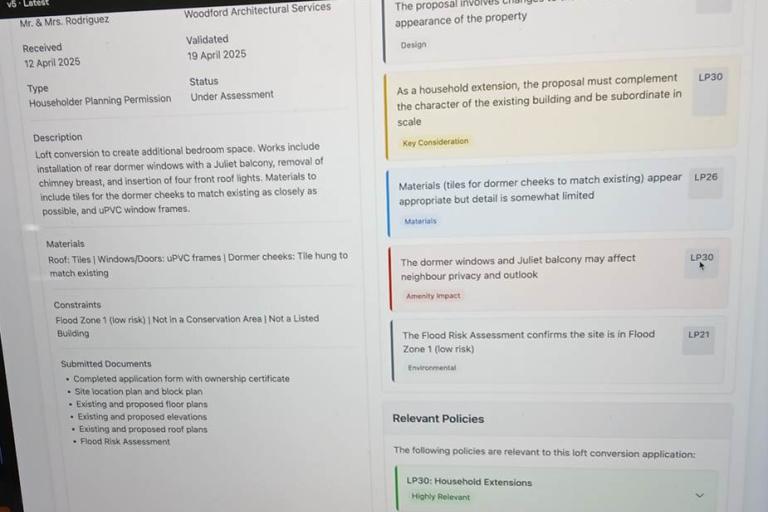Most of the content on this intranet is made up of ex county council information due to the county intranet being turned off. Please read the blog to find out more about how we have developed this new intranet and where you can go to find information that relates to you.
AI Hackathon: Leeds
I attended the first Local Government Innovation Hackathon hosted by Government Digital Service (GDS) and the Incubator for AI (i.AI), in partnership with the Ministry of Housing, Communities and Local Government Digital Planning programme and Open Digital Planning. This 2-day event took place at Nexus, University of Leeds on the 30th April – 1st May 2025.

The theme for this hackathon was based around Planning. Currently the government has targets of creating 1.5 million new homes. With this target in mind, the planning system can do with being digitised to save time and money.
Due to my current role of working in Intelligent Automation (IA) I naturally decided to choose option B out of the 4 possible ‘Problem Statements’:
A) The planning system struggles to meet the demand for new housing and anticipate future demand. This leads to mismatches between housing supply and the number of people needing homes. There is an opportunity to develop predictive models that can integrate population trends, migration patterns, and economic indicators to improve forecasting and support data-driven decision-making in housing supply needs
B) The planning system is hindered by manual, time-consuming processes. Planning officers can find it difficult to assess applications quickly – especially complex applications. There is an opportunity for automation and AI augmentation to streamline planning application reviews, document processing, and predictive maintenance. Enhancing automation and efficiency in planning processes is vital to reduce bottlenecks, improve decision-making accuracy, and free up planning officers to focus on more strategic tasks.
C) When engaging the Public in planning processes, it’s often limited and ineffective. There’s both an opportunity to demonstrate how meaningful engagement with the planning system positively impacts communities and spaces and to help translate planner language and visions into human terms, make policy impacts more tangible in the lives of members of the public, and help stakeholders better understand the trade-offs inherent in urban planning.
D) Policy makers across the UK face a complex challenge: how to plan for new homes while balancing infrastructure constraints like water resources, electricity capacity and transport. They need to understand the current capacity of each infrastructure system at a local level, capture when and where planned upgrades (e.g. improving electricity capacity of an electricity substation) from central, local government and providers may take place and then assess whether there will be any deficits by 2035 or 2050.
Over the 2 days, there were approximately 150 people from various councils, civil service and private sector who all had an interest in AI. Some were from very technical background working with AI directly (data scientists and engineers) while others were less technical but used AI such as ChatGPT in their daily day-to-day lives. We were split into groups of 8-10; all who had chosen the same problem statement. In our group we had an expert in Planning from Redbridge Council to help us with the process of what it takes to get a planning application approved. We spent quite some time deliberating on how to approach the problem and how to use AI to solve it. This hackathon was also in partnership with Amazon Web Services (AWS). They helped to provide us with a wide array of services free of charge to experiment with. From AWS we selected to use:
- Amazon Bedrock: This allowed us to use our chosen Large Language Model (LLM) to make direct API calls with; our chosen LLM to do the AI Processing with was Claude AI (Other LLM’s were available such as OpenAI, DeepSeek etc).
- Amazon S3: This was where the bulk storage of files and data would be stored for easy access.
Eventually as a team we agreed on the following approach:
Solution
The solution starts by a user (resident) who is a creating a planning application for e.g. an extension for their house. As part of their application, they would simply need to attach some supporting documents such as floor plans etc. That’s it for the user’s side for now.
The next step would be for S3 to store the application and documents and then make a call to Amazon Bedrock. Before we call our AI, we will gather the Council Policy documents from S3 for all applications, this is stored separately but will be used to compare against the user’s application. Now Bedrock comes in and allows it to be configured with our prompts. The first prompt will be to map the relevant parts of the application e.g. house extension to parts of the council’s policies regarding house extensions. It will then pick out all parts of the policies that are relevant to a house extension.
Once we get all the relevant policies, we then make a second call to Claude AI via Bedrock which validates the application to the relevant policies and outputs what the application has against the policies and what is missing and what may be relevant so that the application is successful.
This result is then returned to the user via our web app with correctly highlights policies in Red, Amber, Green for directly relevant policies and Blue and Grey for environmental and other factors. This information is then sent back to the user to make necessary adjustments to their application so that they have a higher chance of approval.

This solution speeds up the approval of planning applications and saves planning officers a lot of time having to sift through policies, they can then instead focus on policies that may be bespoke to a certain application.
The cool thing I learned was the website we created (one above) it was made entirely by AI. I discovered tools such as Claude Code exist which you can literally give Claude instructions on where to find files in your computer system and write code from scratch, connect it all up to a source control such as GitHub and even deploy the app locally without you having to do anything at all! Just command prompts!

This hackathon was really fun, my team were great it had members from Redbridge Council, North Yorkshire Council, AWS, Network Rail and others. This event was a first of its kind and really allowed me to network with people from various sectors. It also resulted in a winner – the best solution was an app called Clio which transforms raw data from planning decision notices into usable insight about a site’s planning history. It was truly impressive and their prize will be to present their work to the Minister for AI and Digital Government, Feryal Clark MP, and they will also take part in a follow-up workshop to further develop their prototype with i.AI engineers. Hopefully there is more to come so watch this space!
More info about the Hackathon can be found here.
Government Digital Service & Department for Science, Innovation and Technology. (2025, May 6). Blueprint for Modern Digital Government Comes Alive at GDS Local Government Innovation Hackathon in Leeds. https://cddo.blog.gov.uk/2025/05/06/blueprint-for-modern-digital-government-comes-alive-at-gds-local-government-innovation-hackathon-in-leeds/.
(Text in this blog was not generated by AI)
Mohammed Khondoker